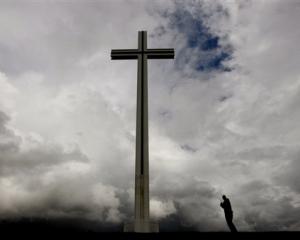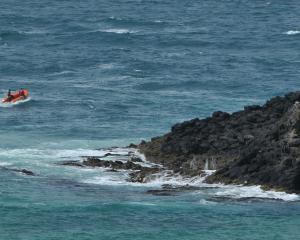A major new strategy in the fight against Omicron has been welcomed but could face severe strain if case numbers overwhelm contact tracers.
The technology allowing cases to be identified as Omicron, Delta or other strains has previously been limited to international arrivals.
But as 19 people were confirmed to have Omicron yesterday, the Government announced the expansion of whole genome sequencing to border-related workers and their families.
Te Punaha Matatini complex systems researcher Dr Dion O’Neale said it was almost impossible to know how widespread Omicron was right now.
“It’s almost certain that this is going to take off and get big,” he said.
He welcomed moving to broaden sequencing, which could determine infection similarity in different people.
Its effectiveness would rely on an intricate series of other events, and ultimately, it seemed likely contact tracing would need refining.
Dr O’Neale said once hundreds or thousands of cases were appearing, contact tracers would have to make judgement calls on whom to track down, and whom to ignore.
“It depends how vigorously you’re contact tracing.”
He said in last year’s Delta outbreak, the tracing system was stretched at about 100 daily cases.
Interviews with contacts were extensive back then.
Dr O’Neale said in an Omicron scenario, investigators might be told an unknown person shared a bus with a positive case.
“Do you spend half a day trying to track down that person, or do you say: We’re going to move on?”
And some contact networks would be much simpler to pin down, he said.
“For example, if someone was infected and they were at work, it was relatively easy to contact trace who they were at work with.”
Dr James Hadfield, a Wanaka-based sequencing expert with Seattle’s Bedford Lab, said the expansion of whole-genome sequencing was a crucial step.
“It’s hugely important. The cost is worth every penny,” he said.
“There is a lag, but the information is so valuable.”
A common PCR swab test can be sent to Environmental Science and Research for sequencing.
“One of the things that genome sequencing allows us to do is to identify whether a positive case at the border, at the community, is Delta, [or] is Omicron.”
University of Otago epidemiologist Prof Michael Baker said the Government was applying the same approach to Omicron as it did to Delta.
Whole genome sequencing could be used on every Omicron case, but probably not for much longer.
Prime Minister Jacinda Ardern on Sunday said the fight against Omicron would be phased, with the first stage when daily cases are less than 1000.
The second phase is transitional, adjusting the focus to those at greater risk of severe illness.
The third stage, if cases are in the thousands, will redefine tracing, contacts and isolation requirements.
It is expected some third stage details will be known tomorrow.
-- JOHN WEEKES












